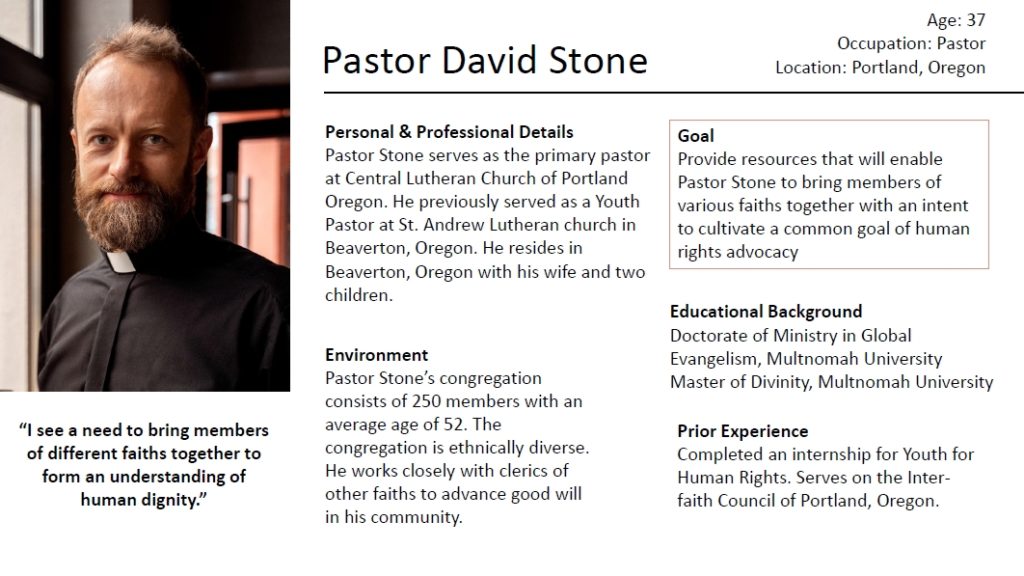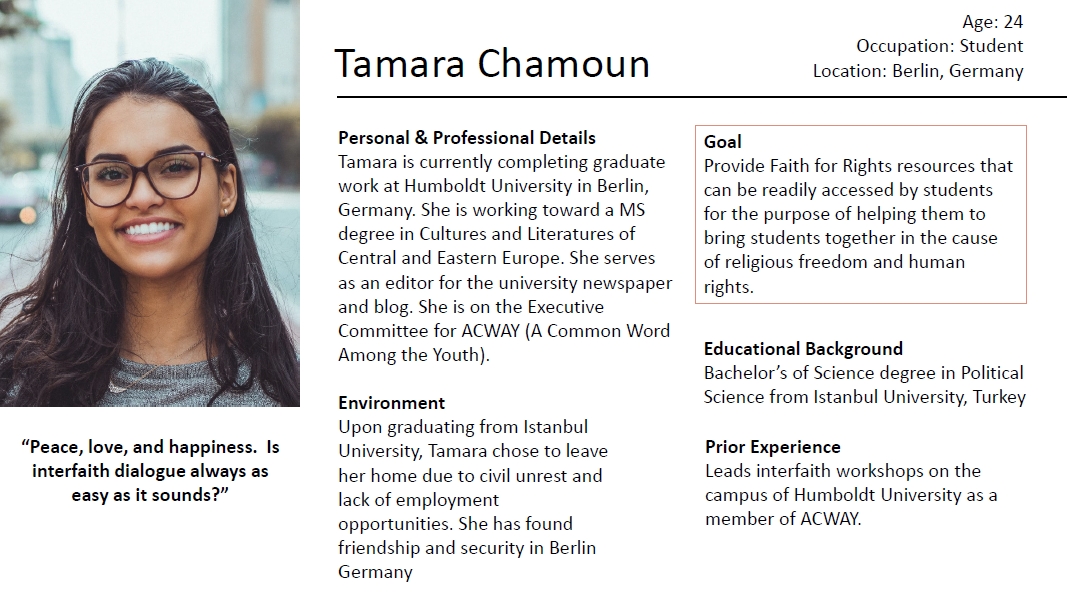Faith for Rights Online Conversion
Award winning project: Outstanding Graduate Student Project | BYU, Instructional Psychology & Technology, 2022-2023.
The purpose of the Faith for Rights Online Conversion project was to convert an existing learning framework, the Faith for Rights Toolkit (FFRT) into an online learning resource usable by interfaith actors and human rights activists of varying educational and cultural contexts, enabling them to advocate for and teach about human rights in their respective global communities.
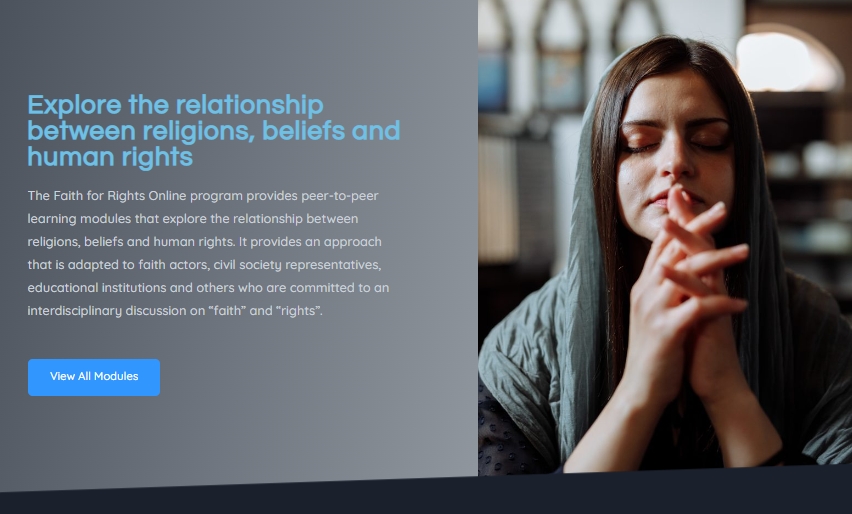
Background
The original Faith for Rights framework was developed by stakeholders at the United Nations Office of the High Commissioner for Human Rights. The product of their work was a 124 page pdf document consisting of 18 learning modules. The content is intended for use by facilitators of in-person group sessions in which participants gain understanding of a variety of topics related to freedom of religion or belief and human rights. It is centered around a peer-to-peer learning strategy.
The Problem
Despite rich content and numerous learning activities and resources, the Faith for Rights toolkit was not being used by anyone other than the original content writers.
The Solution
- Provide a convenient and organized online learning resource.
- Develop an online course that would train facilitators.
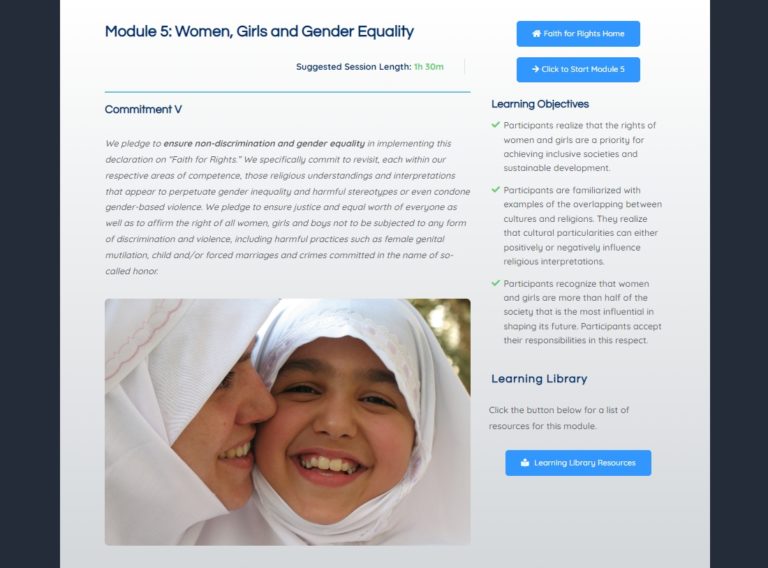
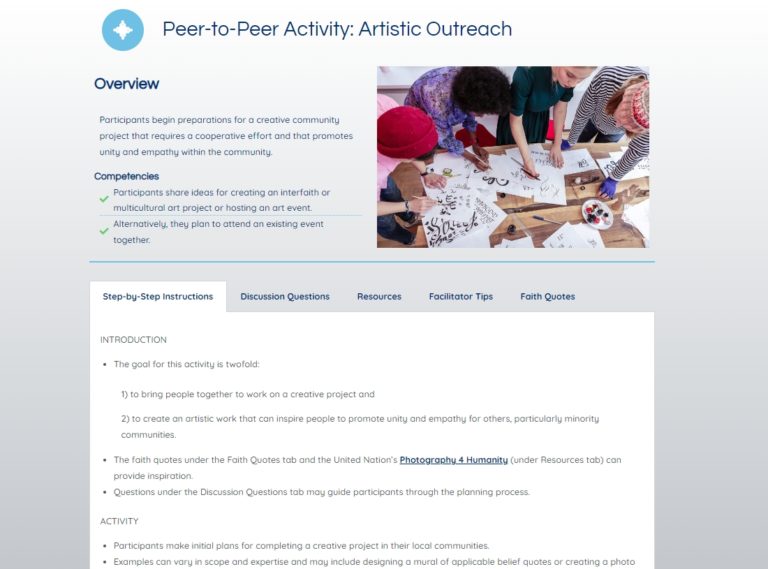
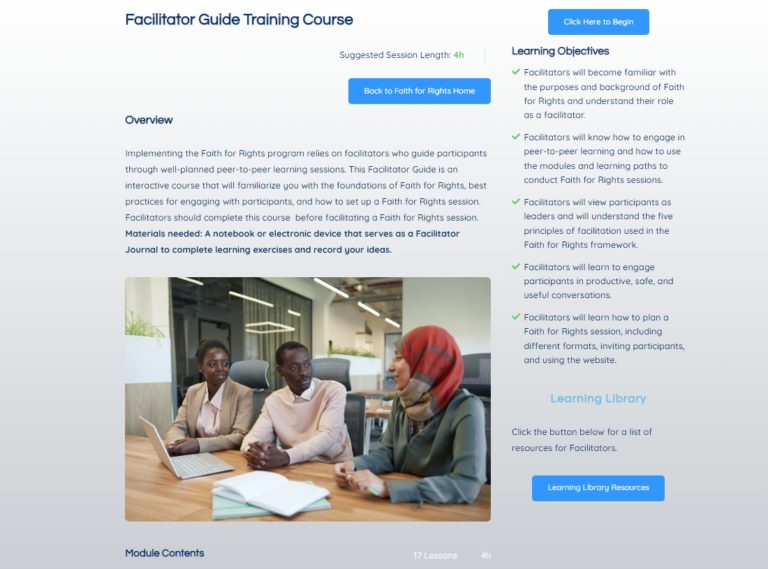
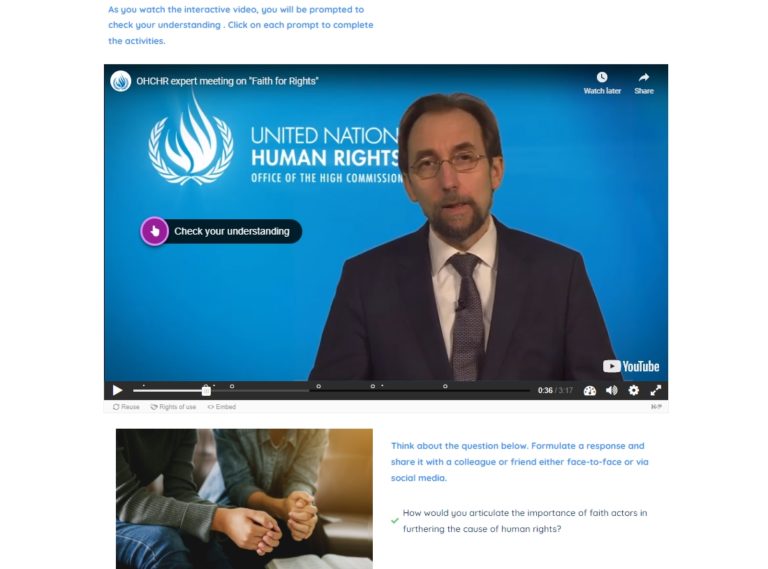
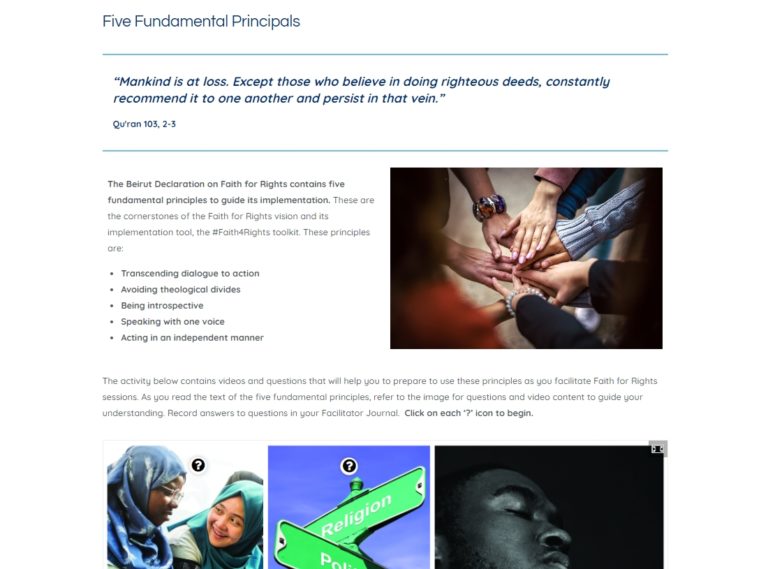
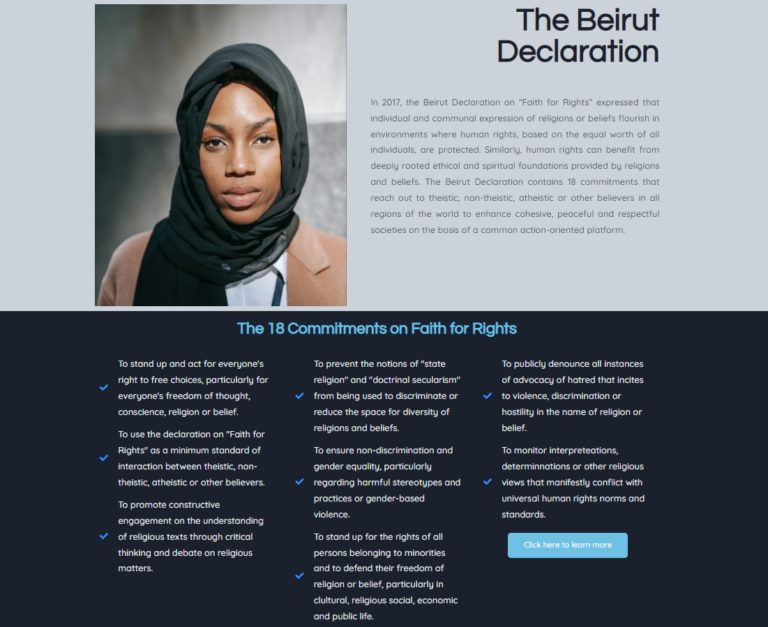
My Role
I played a significant role as the Project Manager and Lead Instructional Designer on this project. I oversaw a team of seven law students enrolled in a Human Rights clinic course at the BYU J. Reuben Clark School of Law. The intent for the law students was to contribute on a human rights project in a meaningful and impactful way. My responsibilities were as follows:
- Trained and supervised the law students on instructional design principles, the ADDIE model, and WordPress website development.
- Completed learner personas, user analysis, content and task analysis, and determined the instructional strategy to use.
- Created storyboards, prototypes, and a style guide.
- Supervised and collaborated on the development of learning paths and instructional materials.
- Collaborated on the development of the Facilitator Guide Training course including course format, writing content, and developing interactive learning activities utilizing H5P.
- Oversaw evaluation activities including surveys, interviews, and field work sessions.
- Developed the WordPress website.
- Led bi-weekly meetings with stakeholders from the United Nations Office of the High Commissioner for Human Rights.
A Look at the Process
A critical element to this project was analyzing the original Faith for Rights document to determine the flaws and gaps, as well as determining who the target user would be. I interviewed former users of the Faith for Rights toolkit and potential future facilitators of the program. A thorough Environmental Analysis and Content Analysis were completed.
The result? Learners were confused by the document and its purpose.
Mockups and wireframes allowed us to test different designs with potential users and with stakeholders. Following a style guide provided direction throughout the website build. Because the design process was iterative, the layout and style of the website evolved throughout the process.
Collaboration with law students was critical to the success of this project. Law students are smart! But they didn’t know how to design for learners. I designed templates to help them to stay on track. The templates helped the law students to:
- Align competencies with learning objectives
- Build learning paths based on a progression of problems sequence
- Ensure consistency of content throughout the modules
- Apply First Principles of Instruction methodology to learning materials
I understand much more about what goes into creating a course. There is so much more behind the scenes than I realized, and I have much more appreciation for how much thought goes into each small detail.
Daniela L.
Law StudentDesign Lessons
- Use caution when working with diverse stakeholders. The stakeholders on this project were very intent that we stay true to the original content of the Faith for Rights Toolkit. This made design decisions delicate when determining how to simplify the course.
- Interdisciplinary collaboration creates a better product. Although my team of law students turned instructional designers required a few extra steps, the end result was a rich experience for all of us and a product that made the stakeholders very happy.
- For more information on this project, click to view the AECT Design and Development Showcase presentation poster.

